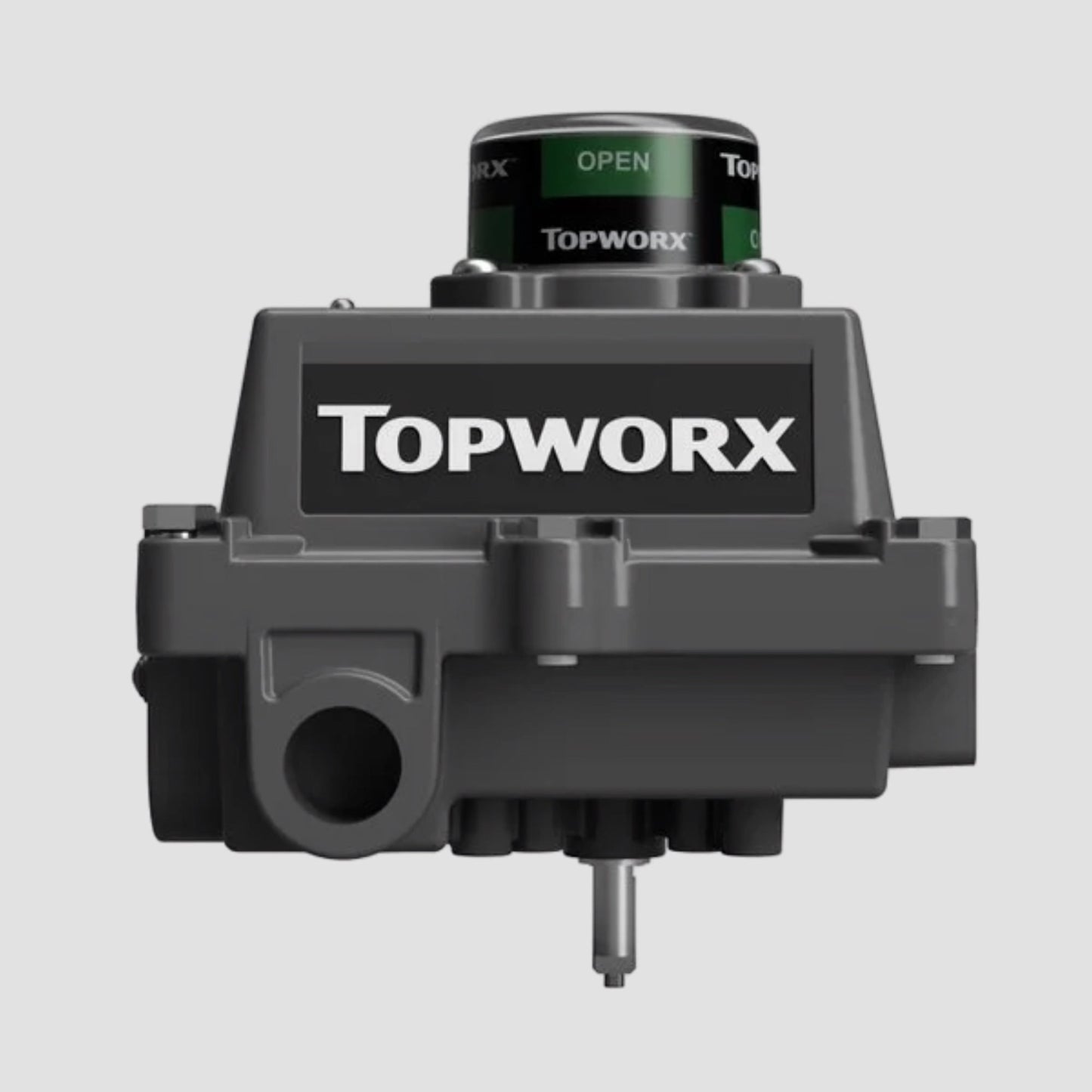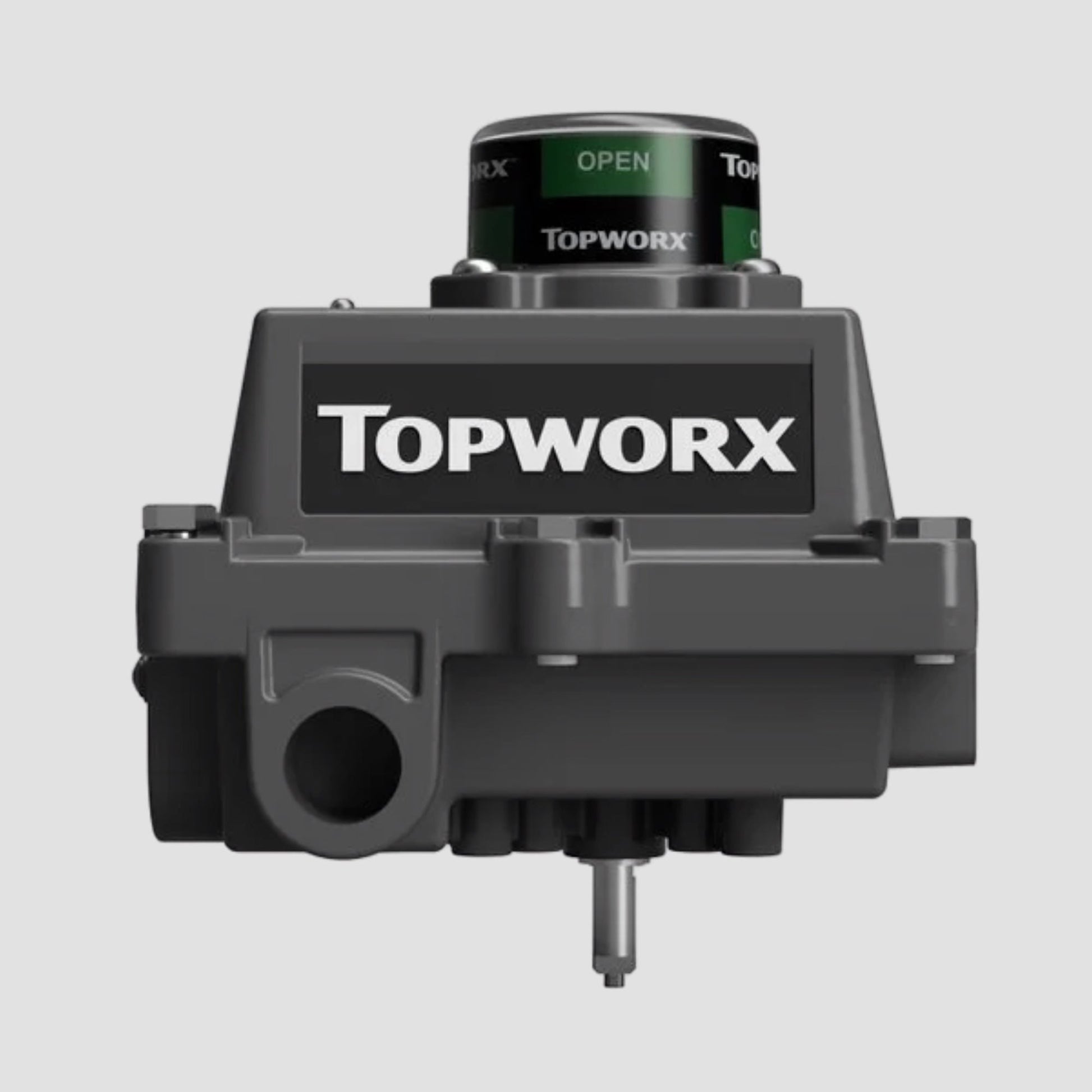Topworx Switchboxes
TopWorx Limit Switch Box DXP-001GNEB Valve Monitor
TopWorx Limit Switch Box DXP-001GNEB Valve Monitor
Couldn't load pickup availability
The TopWorx Limit Switch Box DXP-001GNEB Valve Monitor is a reliable solution designed for valve position monitoring in challenging industrial environments. Engineered with a DXP tropicalized aluminum enclosure, it withstands harsh conditions, including humidity and corrosion. Ideal for hazardous areas, this device meets Area Classification 1 - Explosionproof/Flameproof standards, providing safety in environments with flammable gases or vapors.
This valve monitor incorporates a NAMUR 316 stainless steel shaft for durability and compatibility with NAMUR mounting standards, paired with a standard 90° green OPEN visual display for quick and clear position verification. Dual ¾" NPT conduit entries allow easy integration, while Buna-N O-rings enhance the sealing against environmental factors. Without additional switches, pilot devices, spool valves, or manual override, this model is streamlined for straightforward monitoring needs.
Key Features:
- DXP Tropicalized Aluminum Enclosure: Ensures resilience in harsh environments, including corrosive and humid atmospheres.
- Explosionproof/Flameproof Area Classification 1: Certified for hazardous locations, adding protection in flammable conditions.
- NAMUR 316 Stainless Steel Shaft: Provides long-lasting durability and compatibility with standard mounting.
- Standard 90° Green OPEN Display: Clear, visual indication of valve position for quick assessment.
- Dual ¾" NPT Conduit Entries: Simplifies electrical installation and integration.
- Buna-N O-Rings: Seals against moisture and contaminants, enhancing the device’s environmental resistance.
This model is an ideal choice for essential valve monitoring in tough industrial settings, offering robust construction without the need for complex additional components.
Share

Enquire Online!
FAQ's
What is the difference between a valve and an actuator?
What types of actuators are available?
The main types of actuators are:
Pneumatic actuators – use compressed air for fast, reliable operation.
Electric actuators – use electrical power for precise control.
Hydraulic actuators – use fluid pressure for high-torque applications.
Each type offers unique advantages depending on the environment, media, and system control needs.
How do I choose the right actuator for my valve?
To select the correct actuator, consider:
Valve type and torque requirement
Power source available (air, electric, or hydraulic)
Operating environment (temperature, humidity, hazardous area)
Control signal type (on/off or modulating)
Matching actuator torque and compatibility with the valve’s ISO mounting ensures reliable performance.
What are the main types of valves used in automation?
The most common valves in automated systems include:
Ball valves – for tight shutoff and quick operation.
Butterfly valves – for larger flow control with compact design.
Globe valves – for precise throttling and flow regulation.
Check valves – to prevent backflow.
Gate valves – for full bore flow isolation.
What’s the difference between a double-acting and spring-return actuator?
Double-acting actuators use air (or power) to both open and close the valve.
Spring-return actuators use air to open (or close) the valve, and a built-in spring to automatically return it to a safe position when power or air is lost — ideal for fail-safe operation.
How often should valves and actuators be serviced?
Regular maintenance intervals depend on operating conditions, but a good rule of thumb is to inspect every 6–12 months.
This includes checking for leaks, lubrication, seal wear, and actuator responsiveness to prevent unexpected downtime.

